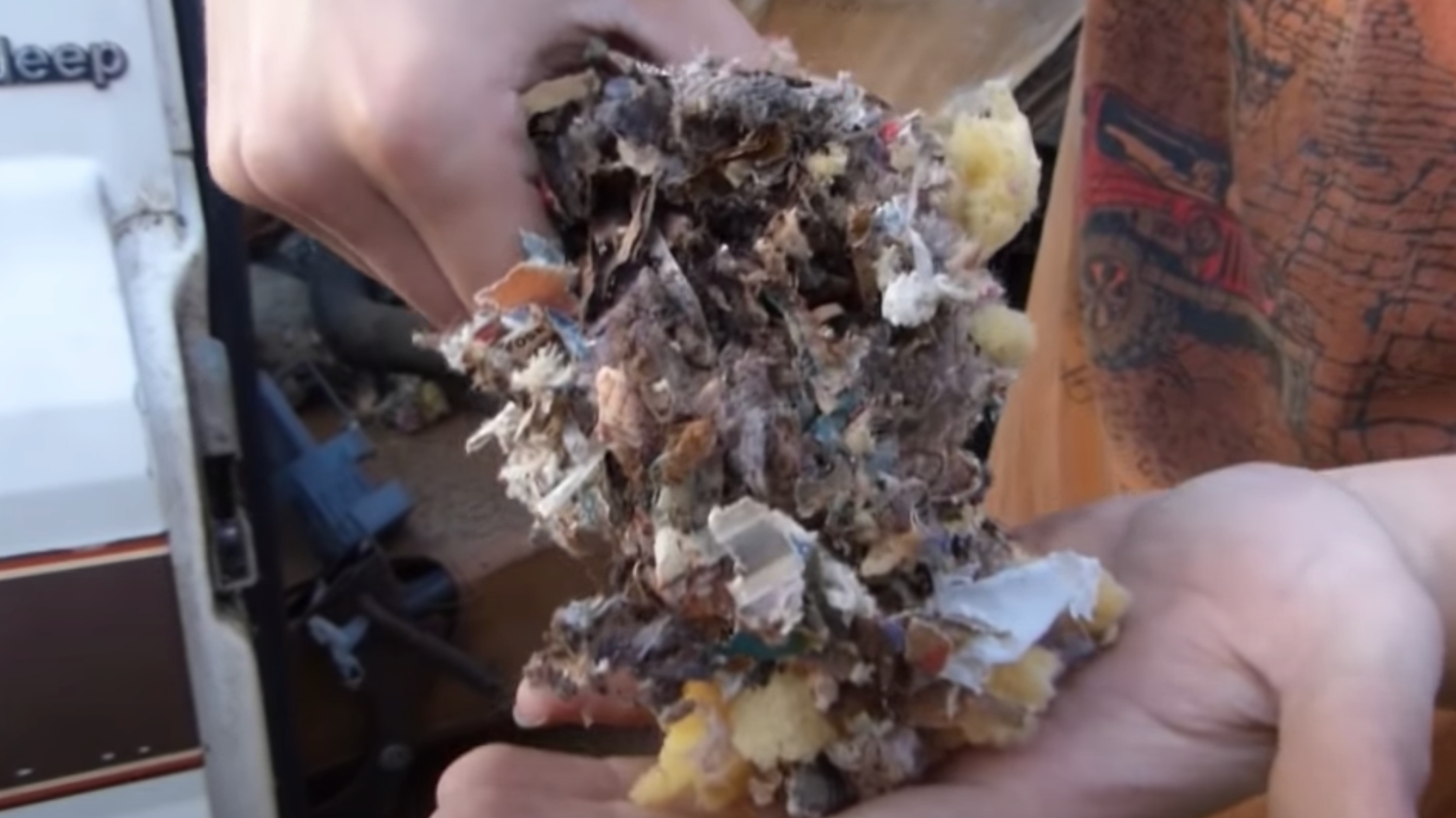How To Keep Rodents' Nests Out Of Your Long-Term Parked Car
Many Americans spent the last few weeks doing very little driving in the name of social distancing and, while the travel break may have allowed commuters to cut down on their driving, adherence to stay-at-home orders has left cars vulnerable to rodent infestations.
The Detroit Free Press has a story out today about the rising problem of little critters making their homes in cars. A car is a perfect place for a rodent, after all. It's dark, protected, no where near owls and a good place to stay warm. Plus there's plenty of nesting material in the form of upholstery and seat cushions. But once rats, mice and even, one mechanic claimed, woodchucks make their home in a car it is a disgusting task to clear them out, a struggle our own David Tracy learned the hard way with his Jeep Grand Wagoneer and his Jeep J10:
Gross, but not as bad as what can happen in more modern cars: hundreds of dollars in repairs. While the rodent's nest could quickly become a fire hazard in a running car, it's their teeth that do the most damage. The double whammy of cars sitting too long mixed with a lack of food from shuttered restaurants are driving the rodents to seek out parked cars as not just shelter but as a potential food sources. The little guys are chowing down on the wiring of some cars, the Free Press explains:
A class-action lawsuit was filed in 2016 in California against Toyota claiming the company should cover — under warranty — damage from rodents chewing through insulation for wiring that is now soy-based versus petroleum-based.
But even owners of cars with petroleum-based wiring insulation can find their electrical system chewed to bits, as all wires make for great chewing for critters with constantly growing teeth. Replacing a whole wiring harness is not cheap. One Michigan mechanic told the Freep his independent shop averages around $400 to $600 for the repair.
The best way to avoid an infestation is to drive your vehicles, but that's not always an option. If you're worried about leaving your ride laying around, the Freep has some solid tips for keeping your car vermin free. Hopefully, these tips aren't too late to save some cars:
Here are some other suggestions from the experts:
Spray commercially approved rodent repellent around the lower perimeter of the vehicle and wheel wells.
Peppermint oil sprayed around the car works too.
Some automakers make a tape with chili oil on it. It wraps around wiring and has a repelling taste to rodents.
Keep bird feeders far away because, "Bird feeders aren't just feeding birds; they're feeding rats," Dantzer said.
There are moving fake owls or scarecrows that will scare away rodents.
Look at the car daily, open the door and the hood, shine lights on the engine.
Cats and dogs are predators, so you can leave them in the garage for awhile, if the temperature is safe for them.
Set traps near the front wheel well where rodents enter.
Reminder: Do not use a rat or mice poison for outdoor vermin as local birds or prey or cats might accidentally ingest the poison.
